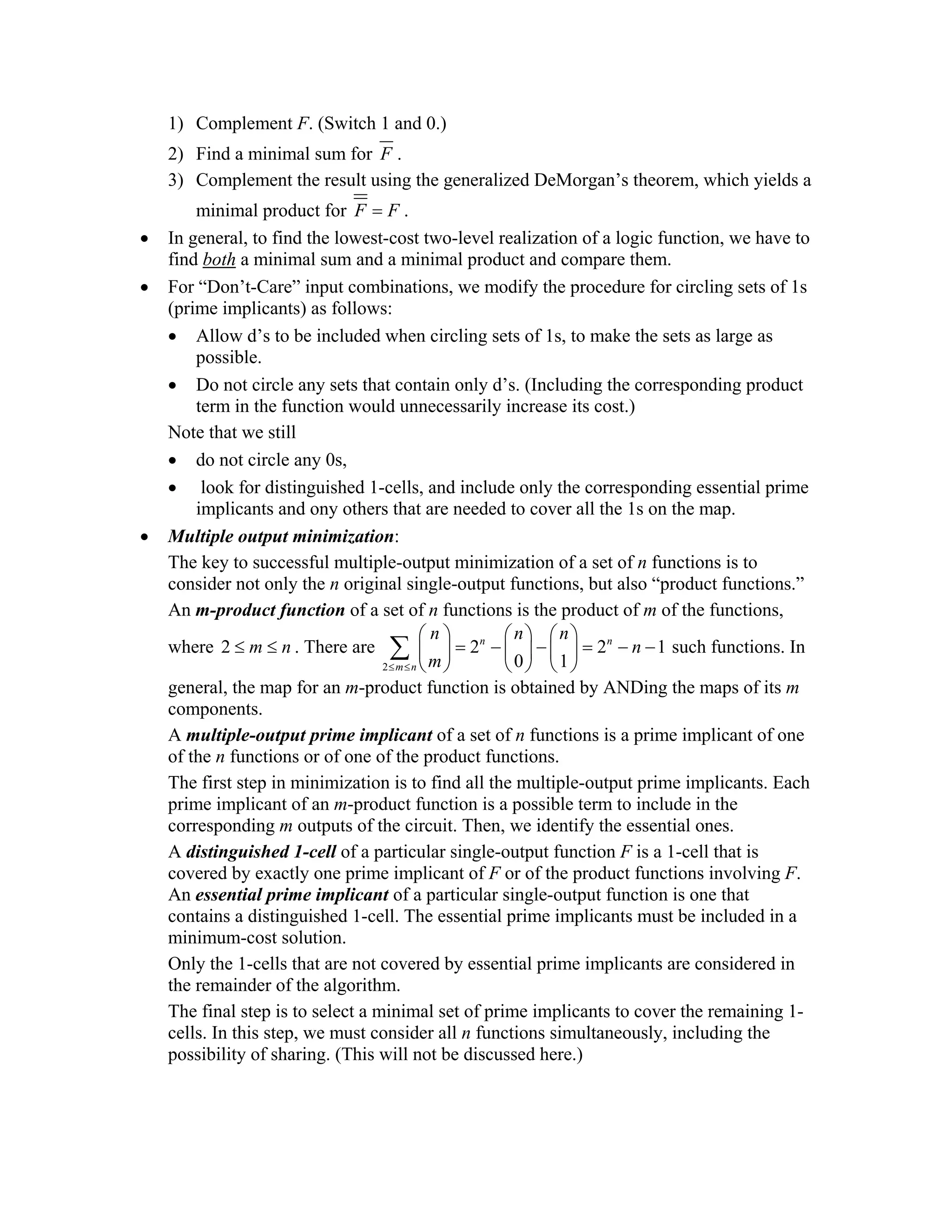Embed presentation
Downloaded 56 times






1) A K-map is a graphical representation of a logic function's truth table as an array. Each cell corresponds to an input combination. 2) Cells can be combined if their 1-values differ in only one variable. The product term has literals for variables that are the same in the combined cells. 3) Finding a minimal sum involves expressing the function as the sum of essential prime implicants, which are product terms that cannot be simplified further while still covering all 1-values.





